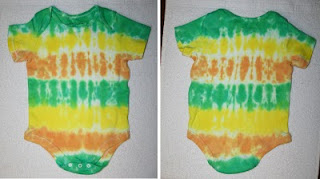Two problems to overcome. First, the transfers are translucent. So to make the image really "pop" it needs to be over a light colored surface. And since white is not an ink color but rather an absence of ink, any white in an image transfer is actually just an empty area that will go from translucent to transparent when properly heated. So to keep the white in an image, the surface you apply it to needs to be white. But what if you don't want your finished piece to be white? That would be pretty boring, if everything you made with transfers had to be white!
With that in mind, I decided to put a thin white backing on my transfers so that I can then apply them to any color surface and not lose the "pop". Or the white where it should be white. So first I made a sheet of Premo white, #5 on the pasta machine. After carefully trimming the transfers I laid them over the white sheet, cut out the background shape I wanted, then removed the transfers. I then baked the white pieces and sanded the tops, to get a very smooth surface to apply the transfers to.
To permanently adhere the liquid clay transfers to the cured white clay, I need to use a thin layer of liquid clay as "glue" to form the bond. Now here's where dilemma #2 comes in. The white backing bakes at 275*, any higher and it will most likely burn. (Will definitely burn, I should say, as I tried it at 300. I had to see for myself.) But the liquid Kato, according to the manufacturer's website, should be baked at 300* for 20 minutes to get a matte finish, then at 350* for another 10 minutes to achieve crystal clarity. What to do, what to do ....
I ended up doing it in two steps. First I brushed a thin layer of the liquid Kato onto the backs of the transfers, smoothed them onto the white backings and baked at 275* for 15 minutes. That gave me a bond without burning anything but left the surface of the transfers very dull and matte. I still need to get the liquid clay hot enough to clear it up and make it glossy. Without burning the white clay.
So I got the heat gun out and did a couple of pieces without applying any more liquid clay. That did not work out very well as the exposed white Premo clay areas burned. I was pretty sure that would happen but had to try it anyway.
With the remaining pieces, I brushed a layer of the liquid clay over the entire top, hoping that would protect the white Premo areas from the heat gun, and it did! Was able to clear up the liquid clay and get a nice glossy surface, with no burning.

The cured pieces are thin enough they can be still be trimmed with scissors if desired (though next time I will make the backings thinner, as thin as I can) and are ready to be made into ... somethings.
As I continue to go along, I am sure that I will be able to shorten this process, combine or eliminate steps, etc. But for now I am happily moving along, learning as I go. Which by the way, here are a few things I have learned so far.
#1) Most tutorials I have read re using liquid clay say to apply it in very thin layers, cure, and repeat if desired to build up thickness. When I brushed it on as thin I could, I did not get very good results. It ended up with a sort of crackly texture. I got better results applying it a bit thicker.
#2) I have also read that if you let the liquid clay sit for a bit (after brushing it on) before heating it, it will help it "seek its level". So I let a few pieces sit
for about 20 minutes. I did not get results with that; the liquid clay sort of contracted, leaving "naked" areas all along the edges. So I had to add a little more to work it back out to the edges.
I've experimented in the past but failed to note anything I did, assuming I would remember the do's and dont's I'd learned later. Not so! :( So this time I am noting what I am doing. Makes for very boring blog posts, but lets me remember what I did. ;)













![[Beatnik Bubbles] Bath Towel Set [Beatnik Bubbles] Bath Towel Set](https://rlv.zcache.com/beatnik_bubbles_retro_polka_dot_striped_rainbow_bath_towel_set-r6ff2efcc40994c988ffa9c029a606789_ezaga_550.jpg?rlvnet=1)
![[Geometric Tie-Dye] Acrylic Coaster Set [Geometric Tie-Dye] Acrylic Coaster Set](https://rlv.zcache.com/peace_sign_geometric_rainbow_tie_dye_acrylic_coaster_set-r0267d5072cb246fc8dae868f4ecada8c_0mkpe_550.jpg?rlvnet=1)
![[Atomic Tie-Dye] Stone Coaster [Atomic Tie-Dye] Stone Coaster](https://rlv.zcache.com/atomic_tie_dye_rainbow_colors_peace_sign_symbol_stone_coaster-rd9f36a3b29564c25a5d2c8d7807c6b6f_zxeh9_550.jpg?rlvnet=1)
![[Harlequin Tie-Dye] Accent Pillow [Harlequin Tie-Dye] Accent Pillow](https://rlv.zcache.com/harlequin_tie_dye_diamond_fractal_checkered_v2_throw_pillow-re2dab7a710ca40c19e8721db2ac89a5e_6s309_8byvr_550.jpg)
![[Painters Cloth] Espadrilles [Painters Cloth] Espadrilles](https://rlv.zcache.com/painters_cloth_distressed_rainbow_tie_dye_espadrilles-r9c66833b65fd4649b2de6ad464abf10e_012y1_550.jpg?rlvnet=1)